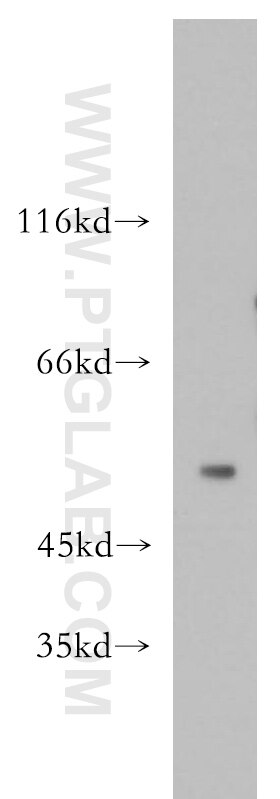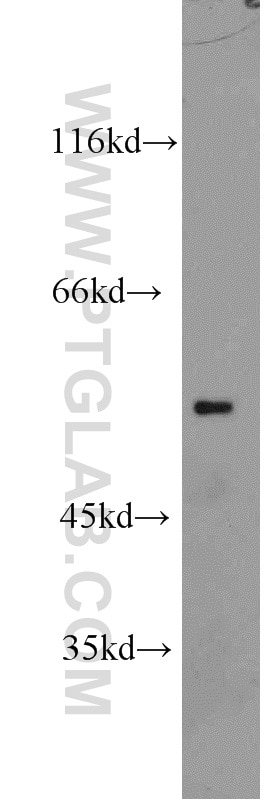Tested Applications
| Positive WB detected in | SH-SY5Y cells |
Recommended dilution
| Application | Dilution |
|---|---|
| Western Blot (WB) | WB : 1:500-1:1000 |
| It is recommended that this reagent should be titrated in each testing system to obtain optimal results. | |
| Sample-dependent, Check data in validation data gallery. | |
Published Applications
| WB | See 1 publications below |
Product Information
18820-1-AP targets GPR142 in WB, ELISA applications and shows reactivity with human samples.
| Tested Reactivity | human |
| Host / Isotype | Rabbit / IgG |
| Class | Polyclonal |
| Type | Antibody |
| Immunogen |
Peptide Predict reactive species |
| Full Name | G protein-coupled receptor 142 |
| Calculated Molecular Weight | 462 aa, 51 kDa |
| Observed Molecular Weight | 51-55 kDa |
| GenBank Accession Number | BC152987 |
| Gene Symbol | GPR142 |
| Gene ID (NCBI) | 350383 |
| RRID | AB_10597384 |
| Conjugate | Unconjugated |
| Form | Liquid |
| Purification Method | Antigen affinity purification |
| UNIPROT ID | Q7Z601 |
| Storage Buffer | PBS with 0.02% sodium azide and 50% glycerol, pH 7.3. |
| Storage Conditions | Store at -20°C. Stable for one year after shipment. Aliquoting is unnecessary for -20oC storage. 20ul sizes contain 0.1% BSA. |
Background Information
GPR142, also named as PGR2, belongs to the G-protein coupled receptor 1 family. It is an orphan receptor. This antibody recognizes the 51-kDa GRP142.
Protocols
| Product Specific Protocols | |
|---|---|
| FC protocol for GPR142 antibody 18820-1-AP | Download protocol |
| WB protocol for GPR142 antibody 18820-1-AP | Download protocol |
| Standard Protocols | |
|---|---|
| Click here to view our Standard Protocols |






